








If you’re looking to get qualifications and training for any part of the fire industry, you’re in the right place. Each year, the FIA trains over 6,000 delegates.
Simply find the training that’s right for you and book via the FIA website.
We look forward to welcoming you on one of our courses very soon.
Ian Moore, CEO

“Let your staff be proud of what they can achieve by giving them a chance to succeed at becoming qualified engineers, and suddenly your engineers will become the biggest advocates of your brand. And when you’re trying to grow a business, that’s what it’s all about.”
John Battersby, Managing Director, Sunfish Services
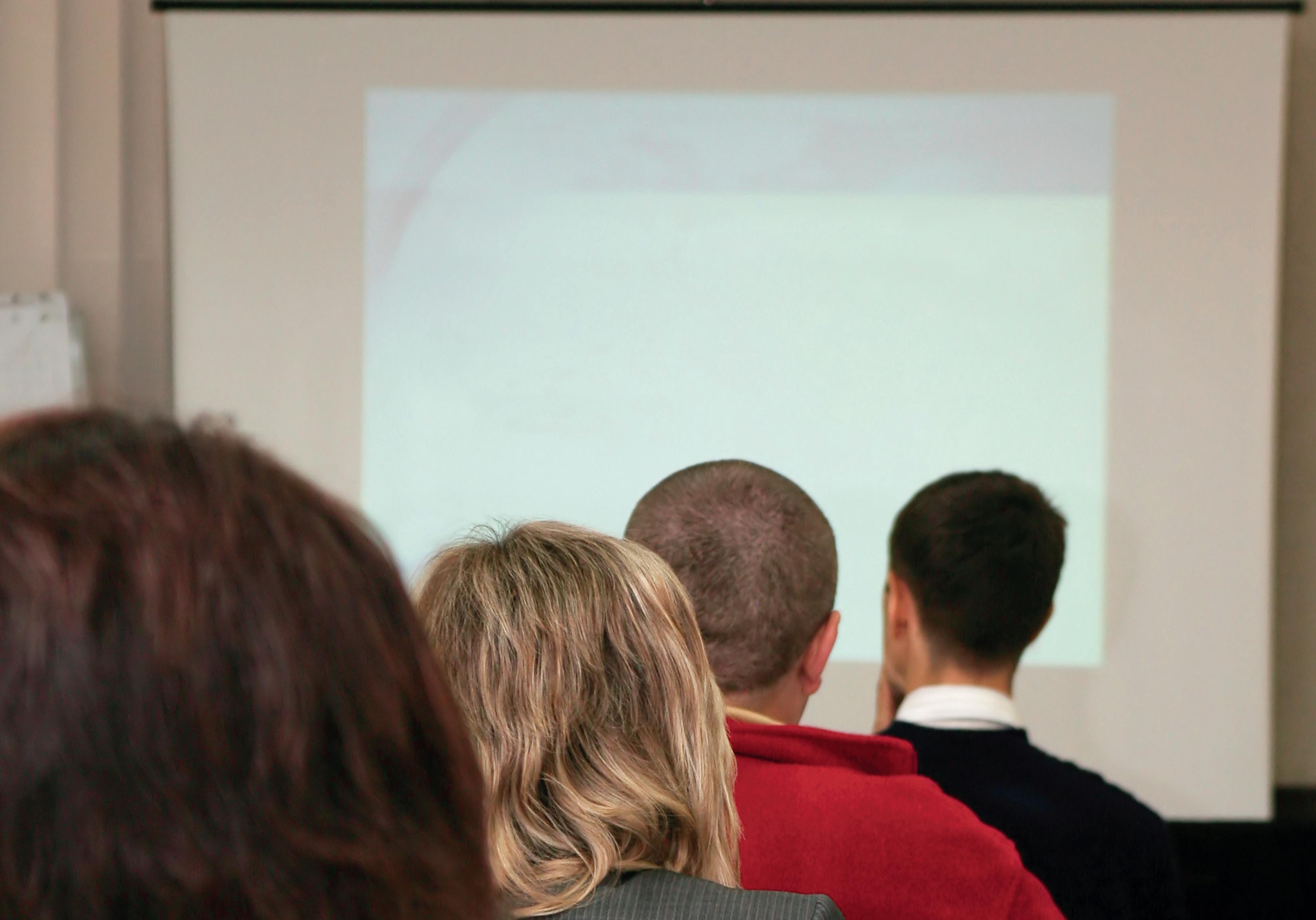
The FIA is the leading trade association for the fire industry in the UK.
Through our industry-recognised courses & qualifications, we offer training designed to help you develop your career, build your business and stay up to date with the latest revisions to fire protection Standards.
Our training is delivered by experienced industry professionals who, as well as effectively delivering the course, can provide real-world examples to really translate the theory into practice. It is training for professionals by professionals.
Enrol on FIA training and you are joining over 35,000 fire safety professionals who have already increased their skills and earning potential.
We believe that everyone working in fire protection should be able to provide evidence of a certain level of competency, raising standards throughout the fire protection industry. Through the FIA, we offer specialised qualifications designed to provide that demonstrable level.

Nationally recognised qualifications are achieved through FireQual, an Awarding Organisation that recognises the FIA as an approved training centre. FireQual is recognised by a number of national regulators and their FD&A Qualifications cover the requirements for SP203-1 Scheme.
By completing an FIA course, you are ensuring your compliance with current legislation, industry best practice and published standards and guidance.
Employers:
• Courses covering all aspects of fire protection, whatever your specialism
• Training available across the UK throughout the year
• Dedicated courses available in your own workplace
• Prove the competency of your technicians through nationally recognised Qualifications in line with the SP203-1 requirements
• Grow your team’s knowledge and confidence
Delegates:
• Professional learning from the professionals themselves
• Prove your knowledge and skills
• Instant credibility with employers
• Supported learning in a range of formats
• Support for those with additional needs, e.g. dyslexia
• Prove your competency through FireQual AO qualifications
“I found the course very helpful. The trainer made it enjoyable and easy to understand”
Brandon Young, MITIE

After taking the Foundation unit, you can take any course, in any order, and your qualification is achieved once Environmental, Health and Safety and your chosen advanced course is completed.


The FIA offers 6 Level 3 Fire Detection & Alarm (FD&A) Qualifications through the awarding organisation FireQual.
All the FD&A Qualifications the FIA offer cover the requirements for SP203-1 Scheme V8 part of which includes the requirement for engineers to have a regulated qualification in BS 5839-1 with the relevant content at a Level 3 or higher.
All completed Qualifications mentioned below are to OFQUAL Level 3 and SCQF Level 6 (which is recognised as a level 3 equivalent) and are accepted by BAFE under new requirements.
Below is a description of the qualifications and an explanation of how to decide which one is right for you.
The Qualifications that can be achieved by completing FIA courses are:
• FireQual Award Fundamentals of the Recommendations for Fire Detection and Fire Alarm Systems in Non-Domestic Buildings
• FireQual Award Fundamentals of the Recommendations for Fire Detection and Fire Alarm Systems in Domestic Buildings
• FireQual Award in Fire Detection and Alarm Installation Theory and Regulatory Requirements
• FireQual Award in Fire Detection and Alarm Maintenance Theory and Regulatory Requirements
• FireQual Award in Fire Detection and Alarm Commissioning Theory and Regulatory Requirements
• FireQual Award in Fire Detection and Alarm Design Theory and Regulatory Requirements
The Fundamentals in BS 5839-1 Qualification is made up of Unit 1 & 2, this is 4 days in total and can be achieved by successful completion of the exam on day 4.
The BS 5839-6 Fundamentals is 1 day and an additional Qualification available to those who have completed the BS 5839-1 Qualification. This gains the Qualification in domestic properties.
Each Advanced Qualification is made up of 4 elements, the Foundation course, Environmental course, Health & Safety and one of the Advanced courses. The starting point for this Qualification is the Foundation course, this must be passed before delegates can continue with any of the other required courses. For the required Health & Safety, if the delegate has an ECS card or other recognised certification accepted by the exam body, this can be used as an exemption.
The available Advanced courses are:
• Installer (2 Days)
• Maintainer (2 Days)
• Commissioner (2 Days)
• Designer (5 Day course split into 2 Day & 3 Day Courses)
An Advanced Qualification is achieved once the 4 courses or associated exams are completed successfully.
The other courses on our Qualification pathways are designed to allow delegates to move onto the other Qualification route by taking a condensed version if they have previously taken another of our regulated Qualification courses.
The Fundamentals to Advanced (1 day) is available to those who have successfully completed the Fundamentals in BS 5839-1 Qualification with the Foundation exam at the end of the course. This allows delegates onto the Advanced Qualification route.

The Fundamentals in FD&A Conversion Course (2 days) is exclusive to those who have taken the Foundation course and builds upon the knowledge learned in the Foundation course to prepare delegates for the BS 5839-1 Fundamentals exam allowing them to achieve the Qualification.

The Fundamentals in Fire Detection & Alarm (FD&A) Systems
Courses Unit 1 & Unit 2 have been designed to cover the guidance and recommendations detailed within BS 5839-1: 2017, Code of practice for design, installation, commissioning and maintenance of systems in non-domestic premises. The course is split across two units, with two days for Unit 1, followed by two days for Unit 2, culminating in an open book multichoice exam with a copy of BS 5839-1.
Whatever your role in relation to fire detection and fire alarm systems, if you require a hands on detailed working knowledge of the guidance and recommendations provided within BS 5839-1, these courses are designed to help you achieve that.
None for Unit 1. You need to have completed the Unit 1 course in the fundamentals of FD&A systems to take Unit 2.
Unit 1
• Section 1 for General recommendations of BS 5839-1
• Section 2 for Design considerations of BS 5839-1
• Section 3 for Limitation of false alarms and unwanted fire alarm signals
Unit 2
• Section 4 for the Installation recommendations of BS 5839-1
• Section 5 for the Commissioning & handover recommendations of BS 5839-1
• Section 6 for the Maintenance recommendations of BS 5839-1
• Section 7 for the User responsibilities
• The Annexes of BS 5839-1
FIA Level 3 Fundamentals of Fire Detection and Alarm Systems in Non-Domestic Premises
The overall level 3 Fundamentals course will provide technicians with a working knowledge of BS 5839-1, providing them with valuable knowledge to the benefit of the technician, as well as to their company and their customer. In addition to this knowledge, delegates will learn the structure of the British Standard and how to navigate the standard in relation to the recommendations within.
What are the ongoing benefits?
After completing Unit 1, delegates can arrange to attend Unit 2 and take the course examination.
Once the Level 3 qualification in the Fundamentals of Fire Detection and Alarm Systems has been achieved, delegates will be eligible to take the Level 3 qualification for Fire Detection & Fire Alarm systems in non-domestic buildings covering the requirements of BS 5839-6.
In addition to being eligible for the BS 58396 course, delegates that have passed the fundamentals course will have the option to move onto the advanced qualifications for Installation, Commissioning, Maintenance and Advanced Design by taking the Advanced Conversion course.
The Fundamentals in Fire Detection & Alarm (FD&A) systems course has been designed to cover the guidance and recommendations detailed within BS 5839-6: 2019, Code of Practice for Design, installation, commissioning and maintenance of systems in domestic premises. This is a one day course culminating in an open book multichoice exam with a copy of BS 5839-1.
If your role involves work relating to fire detection and fire alarm systems within domestic premises ranging from single family dwellings, HMO’s, sheltered housing or supported housing in anyway, then this course will provide you with a detailed working knowledge of the guidance and recommendations provided within BS 5839-6.
The successful completion of the Fundamentals course covering BS 5839-1: 2017 for nondomestic premises is a prerequisite for this course. This is due to the requirements of BS 5839-1 being applicable to the larger more complex Grade A systems dealt with in BS 5839-6.
• The scope of BS 5839-6 and the premises covered
• The balance between fire risk, system reliability and its success rate
• The different grades and categories of system available
• A guide to the minimum grade and categories of system for typical premises
• The location of detectors & manual call points specific to domestic premises
• The requirement for the limitation of false alarms
• The audibility requirements for domestic premises;
• The requirements for installation, commissioning & certification
• Plus, other requirements
ONE DAY
The level 3 fundamentals course for domestic premises will provide anyone involved with FD&A systems in domestic premises with a working knowledge of BS 5839-6, providing them with valuable knowledge to the benefit of the delegate, as well as to their business and to their customer or residents. In addition to this knowledge, delegates will learn the structure of the British Standard and how to navigate the standard in relation to the recommendations within.
Upon completion of the exam, delegates will get an instant result and a Level 3 FIA certificate to demonstrate their training, knowledge and commitment to ongoing training.
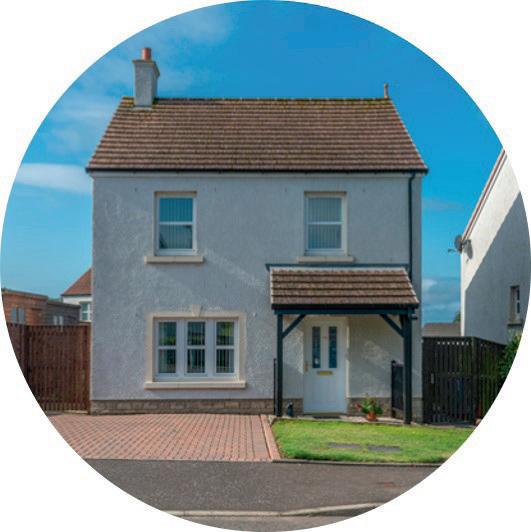
This one-day course is designed to provide the additional knowledge required to sit the Foundation course examination, successful completion of which will allow technicians to progress on to the Advanced Qualifications. At the end of the course, delegates will take an examination to test their knowledge. The examination is closed book and no reference material will be allowed during the examination.
This course will allow access to the advanced courses without taking the full two-day foundation course.
This course is aimed at technicians who have achieved the Level 3 Fundamentals of Fire Detection and Alarm Systems in Non-Domestic Premises qualification, and are looking to progress towards one of the Four Advanced Qualifications for Installation, Maintenance, Commissioning and Design.
Delegates will also need to complete two mandatory units covering Environmental requirements for field technicians and Health and Safety requirements for field technicians.
The FIA would recommend only embarking on the Advanced Qualification pathway if you have at least one year’s experience in the industry, or have taken and passed the Fundamentals in FD&A Qualification.
Before taking this course, we would recommend that delegates undertake some pre-learning. Information relating to the necessary prelearning can be found on the fundamentals to advanced course page via our website, or alternatively the same information can be accessed via the foundation course webpage.
ONE DAY
In addition to your knowledge already gained from the fundamentals Unit 1 & Unit 2 course in FD&A systems, at the end of this fundamentals to advanced conversion course, you should have an understanding of the following
• Legislation
• Explosive Environments
• Construction Product Regulations (CPR)
• The Equality Act
• Types of Contracts
• Third Party Certification
• The Fire Event and Passive Protection
• The Fire Risk Assessment
• Construction, Design & Management (CDM)
• Standards, Codes of Practice, Guidance and Technical notes
• A brief introduction to BS5839-6 for domestic premises
• Fire Detection & Alarm System Technology
• False Alarms and Un-Wanted Fire Signals
• Documentation
What are the benefits of taking the unit?
Successful completion of this course will provide an understanding of the basic principles of fire detection and alarm system standards, giving the candidate a foundation level knowledge in fire detection and alarm systems. Staff that successfully completed this unit can progress to the advanced units. Additionally, you will receive the unit manuals to take away for reference.
What are the ongoing benefits?
This course will provide foundation level knowledge and is the first unit in the advanced qualifications pathway. Learners will then study the other units to gain a full qualification in any of the following: the FIA Level 3 Advanced Designer, Advanced Maintainer, Advanced Installer, or Advanced Commissioner.
This two day unit is the starting point for the qualification and will give learners a strong grounding in standards and codes of practice. Taught by experts in the industry, learners will benefit from the high level of knowledge and experience of our trainers.
The foundation course is the starting point for our advanced qualifications and successful completion of the exam will enable delegates to progress towards the four Advanced Qualifications for Installation, Maintenance, Commissioning and Design. Delegates can choose to complete one or more of the advanced qualifications, and will also need to complete the two mandatory units covering Environmental requirements for field technicians and Health and Safety requirements for field technicians.
Whether you want to specialise in Designing, Installing, Maintaining, or Commissioning fire alarm systems, this unit is for all individuals starting out in the industry, and is a mandatory unit for the qualification.
What other experience/training is needed to take the unit?
None.
What does the unit cover?
• An introduction to the requirements of BS 5839-1
• Legislation
• Explosive Environments
• Construction Product Regulations (CPR)
• The Equality Act
• Types of Contracts
• Third Party Certification
• The Fire Event and Passive Protection
• The Fire Risk Assessment
• Construction, Design & Management (CDM)
• Standards, Codes of Practice, Guidance and Technical notes
• A brief introduction to BS5839-6 for domestic premises
• Fire Detection & Alarm System Technology
• False Alarms and Un-Wanted Fire Signals
• Documentation
TWO DAYS
Provides an understanding of the basic principles of fire detection and alarm system standards, giving the candidate the foundation knowledge in fire detection and alarm systems. Staff that successfully completed this unit can progress to the advanced units. Additionally, you will receive the unit manuals to take away for reference.
Provides a foundation and is the first unit in the advanced qualifications pathway. Learners will then study the other units to gain a full qualification in any of the following: the Advanced Designer, Advanced Maintainer, Advanced Installer, or Advanced Commissioner.
The two-day conversion to fundamentals course is designed to cover the additional guidance and recommendations of BS 5839-1: 2017, knowledge of which is required, in addition to that learnt during the foundation course, to achieve a level 3 qualification in the fundamentals of fire detection and alarm systems in non-domestic premises.
This course is for those that have already taken the Foundation in FD&A course, but for whom that particular qualifications pathway is no longer suitable. It is strongly recommended that delegates review their foundation course manual before undertaking this course, as the BS 5839-1 information within the manual, will be essential for the examination at the end of this course.
Delegates will need to have access to a copy of BS 5839-1: 2017. This copy can either be a hard copy or a digital pdf copy.
This unit is exclusively open to anyone who has taken the Foundation in FD&A course and is aimed at getting you up to speed ready to take the level 3 fundamentals qualification examination. In addition to reading the Foundation course manual, delegates will need to undertake some additional pre-learning by reading the conversion to level 3 course book, also known as book three, which is available from our website.
This course will cover the relevant clauses of BS 5839-1, that are in addition to those already covered during the foundation course. The following clauses from BS 5839-1 will be covered during the course:
TWO DAYS
• Section 1 for General recommendations of BS 5839-1
• Section 2 for Design considerations of BS 5839-1
• Section 3 for Limitation of false alarms and unwanted fire alarm signals
• Section 4 for the Installation recommendations of BS 5839-1
• Section 5 for the Commissioning & handover recommendations of BS 5839-1
• Section 6 for the Maintenance recommendations of BS 5839-1
• Section 7 for the User responsibilities
• The Annexes of BS 5839-1
The overall level 3 fundamentals course will provide technicians with a working knowledge of BS 5839-1, providing them with valuable knowledge to the benefit of the technician, as well as to their company and their customer.
In addition to this knowledge, delegates will learn the structure of the British Standard and how to navigate the standard in relation to the recommendations within.
Once the Level 3 qualification in the Fundamentals of Fire Detection and Alarm Systems has been achieved, delegates will be eligible to take the Level 3 qualification for Fire Detection & Fire Alarm systems in non-domestic buildings covering the requirements of BS 5839-6.
Taking this unit in combination with the other units in the qualifications pathway will qualify learners in fire detection and alarm systems commissioning.
Anyone who commissions fire detection and fire alarm systems of any type.
What other experience/training is needed to take the unit?
Foundation in Fire Detection and Alarm.
What does the unit cover?
• BS 5839/BS 7273
• Inspection and Testing the Fire Alarm System
• Verifying the interface to other systems
• Documentation
• Maintenance Provision
• False Alarm Management
• The Handover and Instruction
What are the benefits of taking the unit?
Level 3 Fire Detection and Alarm Advanced Commissioner is intended to provide technicians with the knowledge and skills necessary to commission Fire Detection and Fire Alarm Systems.
Technicians will understand the specific requirements of current and relevant UK legislation, alongside other associated standards, the technologies available and their application, through to certificating the commissioning and record keeping and handing the systems and associated documentation over to the end user.
Learners completing this unit for their qualification will be able to commission an installed system, confirm the function of the system and any connected ancillary equipment before completing the required documentation and handover to the end user, including providing instructions on system operation, end user maintenance and record keeping.
Learners completing this qualification will have particular knowledge and understanding of:
• The Requirements and application of relevant standards for the commissioning of a system according to the UK Country in which the learner will be working (this may include 2 or more countries when working cross border or in border regions)
• Requirements for testing the system and its components, identifying and rectifying faults, verifying system monitoring and ensuring system components function according to design and regulatory standards
• Verifying the interface between the FD&A system and ancillary equipment, verifying functionality, and compatibility, identifying and rectifying faults, confirming cause and effect
• Understanding documentation, ensuring that the design and installation fulfils both the requirements of the customer and the building, and that they are in accordance with the Fire Risk Assessment and the prescribed system category
• Ensuring that the documentation is complete and ready for handover to the end user
• Understanding system maintenance and system fault finding
• False Alarm Management, Soak Testing
• Instructional techniques

Taking this unit in combination with the other units in the qualifications pathway will qualify learners in fire detection and alarm systems maintenance.
Anyone involved in the routine maintenance and servicing of fire alarm systems.
What other experience/training is needed to take the unit?
Foundation in Fire Detection and Alarm.
What does the unit cover?
• BS 5839
• Documentation
• Maintenance Methodology
• False Alarm Management
• Premises Management
• Waste Management
are the benefits of taking the unit?
Level 3 Fire Detection and Alarm Advanced Maintainer is intended to provide technicians with the knowledge and skills necessary to test & maintain existing systems.
Technicians will understand the specific requirements of current and relevant UK legislation, BS 5839-1 and other associated standards, the technologies available, testing methodologies, fault finding, servicing, maintenance and record keeping.
What are the ongoing benefits?
Learners successfully completing this unit will be able to carry out periodic servicing and maintenance of an existing Fire Detection and Alarm System. Learners will be able to ensure that the work carried out and the system remains compliant with current legislation and guidance. Additionally, successful completion of this unit in combination with the other units in the qualification pathway will lead to a full qualification.
TWO DAYS

Learners will be able to apply their knowledge of:
• Current legislative and regulatory requirements according to the UK nation(s) in which they are employed
• Visual audit of the FD&A installation and make recommendation that a review of the system design be carried out where required
• Test the system and its components including both hard wired and wireless systems, panels, detection components, alarm components, ancillary equipment and power supplies including battery backup
• Be able to carry out inspections of systems that have been disconnected for extended periods or following a fire incident and make recommendations for/carry out remedial/corrective servicing
• Be able to review documentation to identify any specific areas of concern for the servicing visit
• Be able to carry out periodic, routine and special maintenance on a system in accordance with current guidance and industry best practice
• Be able to investigate and identify the causes of false alarms and propose corrective action
• Be able to communicate with the end user and provide training on the operation of the system if required
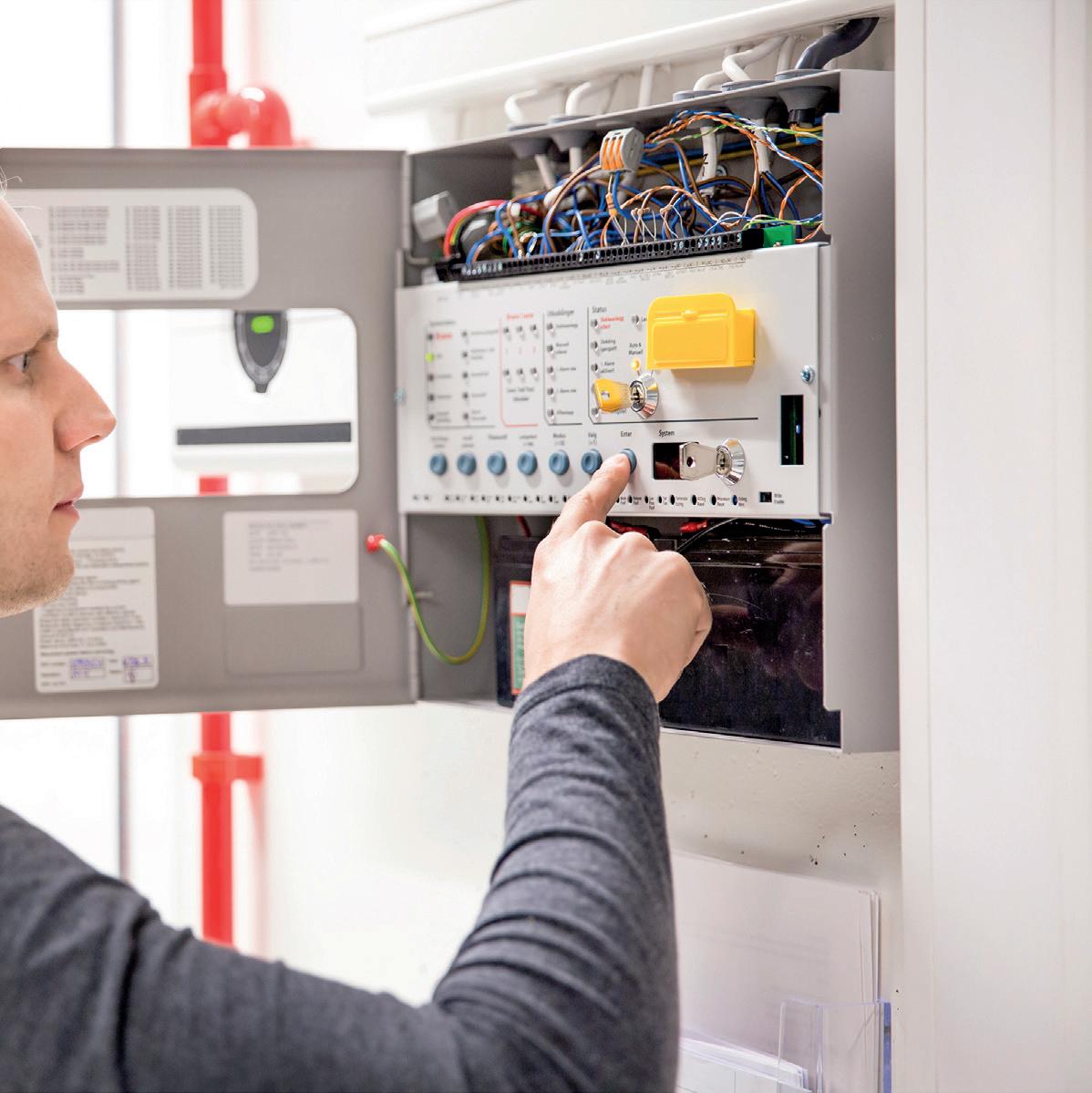
Taking this unit in combination with the other units in the qualifications pathway will qualify learners in fire detection and alarm systems installation.
Anyone who installs fire detection and fire alarm systems.
What other experience/training is needed to take the unit?
Foundation in Fire Detection and Alarm.
What does the unit cover?
• BS 5839
• The Construction (Design and Management) Regulations (CDM) 2015
• Building Regulations
• Installation Methodology
• Documentation/Communication
What are the benefits of taking the unit?
Level 3 Fire Detection and Alarm Advanced Installer is intended to provide technicians with the knowledge and skills necessary to work on the installation and testing of new systems according to a provided system design.
Technicians will understand the specific requirements of current and relevant UK legislation, BS 5839 and other associated standards where applicable, the technologies available through to installation and fixing techniques, testing methodology fault finding and certificating the work carried out.
TWO DAYS

Learners successfully completing this unit will be able to install and test new systems that are compliant with current legislative and regulatory requirements. They will understand and be able to apply their knowledge of:
• Current legislative and regulatory requirements according to the UK nation(s) in which they are employed
• Understand and interpret design plans, recognise when changes in building construction or use lead to design plans that do not relate, and when the design plan requires revision by the designer
• Be able to install a system according to the design plan
• Be able to apply industry best practice in installation techniques and methodology
• Be able to apply industry best practice in testing methodology
• Be able to complete installer certificate, documentation and diagrams
The objectives of this qualification are to:
• Prepare the learner for employment in the FD&A sector as a Systems Installer
• Prepare the learner to carry out the duties in the FD&A sector as a Systems Installer
• Prepare the learner for career progression to more advanced qualifications in the FD&A sector, in particular to qualifications as a System Commissioner and System Designer

Taking this unit in combination with the other units in the qualifications pathway will qualify learners in fire detection and alarm systems design.
People involved in system design and estimation. Designers, consultants and in-house systems engineers.
What other experience/training is needed to take the unit?
Foundation in Fire Detection and Alarm.
What does the unit cover?
• Legislation
• BS 5839
• BS EN 54
• BS 7273
• BS 6266
• BS 7671
• Emergency Lighting/Signage
• BS 9999/BS 9991
• BS EN 12845
• BS 7974
• Interpreting Customer Specifications
• Selecting system type/System design
• Communication, Liaising with third parties and Documentation
• Advanced System Design Principles
• Designing for Inspection and Test
Level 3 Fire Detection and Alarm Advanced Designer is intended to provide technicians with the knowledge and skills necessary to work on the Design of Fire Detection and Fire Alarms Systems. Technicians will understand the specific requirements of current and relevant UK legislation, BS 5839 alongside other associated standards, the technologies available and their application, through to certificating the design and record keeping.
FIVE DAYS
Learners completing this qualification will be able to design a Fire Detection and Alarm System for most premises, there will remain special circumstances where designers will require more specialised knowledge and subject matter and expert support. Learners will however be able to apply the design principles gained through this qualification to produce system designs for comprehensive and effective coverage in accordance with the requirements of the premises, its use and the recommendations of the Fire Risk Assessment and Fire Strategy.
In particular learners will have knowledge and understanding of:
• Current Legislative and regulatory requirements according to the UK Country in which they will be working (this may include 2 or more countries when working across borders or in border regions)
• Knowledge and understanding of the design requirements according to national standards for the UK Country in which they will be working (this may include 2 or more countries when working across borders or in border regions)
• Emergency Lighting and signage requirements in relation to FD&A Systems
• Escape strategy in relation to FD&A systems, compartmentation and refuges
• Integrating FD&A systems with automatic suppression
• Understanding fire engineering and integrating system design with an engineered solution
• Understanding customer requirements and system design to fulfil specific needs
• Working with third parties, ensuring system design fulfils specific needs
• Design systems that are appropriate to the requirements of all parties and the building
• Advanced design principles, complex premises, multi building systems and interfacing with other systems
• Designing systems to facilitate install and maintenance

This unit is designed to give learners a good understanding of safe working practices, including the legal requirements and regulations surrounding health and safety.
Who is it for?
This unit is recommended for all individuals starting out in any field of work relating to FD&A systems and is a compulsory unit for those taking the qualification pathway. You might not need to take this unit if you can provide evidence of alternative Health and Safety Assessment that is recognised as prior learning. Please see our website or phone the FIA office for advice on what we might accept as evidence.
What other experience/training is needed to take the unit
Foundation in Fire Detection & Alarm.
What does the unit cover?
• H&SAW Act 1974
• Manual Handling
• Working at heights
• Lone Workers
• Provision and Use of Work Equipment Regulations (PUWER)
• PPE
• Asbestos
• COSHH
What are the benefits of taking the unit?
An understanding of health and safety and how it relates to fire detection and alarm systems.
What are the ongoing benefits?
Provides a working knowledge of health and safety and is a required unit in the qualifications pathway. Learners will then study the other units to gain a full qualification in any of the following: Advanced Designer, Advanced Maintainer, Advanced Installer, or Advanced Commissioner.
ONE DAY


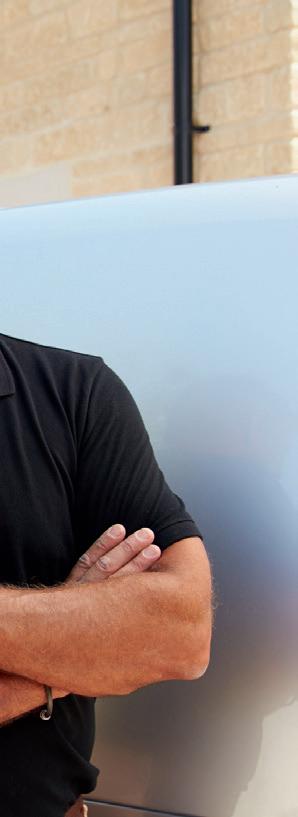
This unit is designed to give learners a good understanding of the environmental hazards and requirements for safe handling of dangerous substances, in accordance with environmental legislation.
This unit is recommended for all individuals starting out in any field of work relating to FD&A systems and is a compulsory unit for those taking the qualification pathway. Under some circumstances, you might not be required to complete this unit if you can provide evidence of recognised prior learning. Please visit our website or phone the office to check what we would accept as recognised prior learning.
What other experience/training is needed to take the unit?
Foundation in Fire Detection & Alarm.
What does the unit cover?
• Environmental Law
• Restriction of the use of certain hazardous substances in electrical and electronic equipment (RoHS)
• Waste Electrical and Electronic Equipment (WEEE)
• Waste Management
• Energy Consumption
• Ionising Radiation Regulations IRR17
• F-Gas
• Ozone Depleting Substances (Halon)
An understanding of the environmental issues and how it relates to fire detection and alarm systems.
What are the ongoing benefits?
Provides a working knowledge of environmental issues for service technicians and is a required unit in the qualifications pathway. Learners will then study the other units to gain a full qualification in any of the following: Advanced Designer, Advanced Maintainer, Advanced Installer, or Advanced Commissioner.
ONE DAY


“Excellent choice in course trainer; very clear, calm and came across exceptionally well for what is a very tricky British Standard.”
Gary Flockton, Assured Fire and Security Ltd
This one day course is ideal for those looking to improve their knowledge on the basic principles of BS 5839-1 and fire related legislation. At various stages throughout the course, delegates will take an informal examination to test their knowledge. These tests will not only help delegates assess their knowledge, they will also help highlight areas for development and further discussion with the trainer. There are no prerequisites for taking this course and upon completion of the access course, delegates will have the opportunity to discuss the next step along the qualification pathway with the trainer & the FIA.
The access course is aimed at anyone who is new to the industry, or who maybe unsure of their FD&A knowledge.
It is considered beneficial for office-based fire industry employees to gain a basic knowledge of fire detection & alarm (FD&A) systems with regards to the guidance and recommendations provide by BS 5839-1, the technologies used and the techniques associated with the design, installation, commissioning and maintenance of the systems.
needed to take the unit?
None.
• UK legislation and EU Directives, including BS 5839-1 and EN 54
• Guides and Codes of Practice
• Third party certification
• Methods of extinguishing
• The categories of systems for a building
• False alarm management
• Detector types and choices
• Manual call points
• Alarm requirements
• Hazardous areas
• Detector & alarm zone sizes and constraints
• Technology and system components
• Cable requirements
ONE DAY
This course will provide delegates with a relaxed introduction to the building regulations, the relevant UK legislation, applicable directives and the requirements of the construction product regulations along with a brief introduction to combustion process and the associated methods of extinguishing.
The bulk of the Access to FD&A systems course is aimed at some of the more pertinent requirements of BS 5839-1, and will be of benefit to anyone who is new to the topic, or anyone with a desire to refresh their knowledge.
Upon completion of the access course there are two pathways available to allow delegates to pursue extra training and to achieve a recognized level 3 qualification.
The BS 5839-1 qualification in the Fundamentals of FD&A systems is a four day course split equally across two units. Upon completion of both units, delegates will take an open book examination with a copy of BS 5839-1, which needs to be successfully completed to gain the overall qualification.
Alternatively, for people who are more experienced in the industry, we also offer the more complexed advanced qualification pathway. This route requires the completion of a number of different units, some of which are mandatory, with a closed book examination at the end of each unit, which must be successfully completed in order to progress along the pathway to gain the overall qualification.
Theoretical training and practical experience for the servicing and maintenance of various types of portable extinguisher.
Based on BS 5306-3 ‘Servicing and Maintenance’ and BS 5306-8 ‘Selecting and Positioning’.
• Anyone who will be carrying out the servicing and maintenance of portable fire extinguishers
• Anyone likely to answer technical questions regarding portable extinguishers
None.
• The theory of fire and extinguishing
• Selection and positioning of the right fire extinguisher
• Classes of fire
• Definitions of a portable extinguisher
• Fire ratings and flammable materials
• Provision and siting of extinguishers
• Inspection periods
• Certification
• Extinguishing agents
• Maintenance requirements
• Carrying out a service: delegates will be expected to complete an inspection and service a range of extinguishers

FOUR DAYS
• Delegates will be able to provide advice on the suitability and the positioning of portable extinguishers
• They will be able to carry out servicing and maintenance
• Course manuals to take away and refer to
• Delegates with an 75% or above pass rate will be issued with a BAFE certificate. This can be used as evidence for Third Party Certification
Three days plus one day exam.
Following training, delegates will be required to successfully complete both a theory and practical exam.
All successful delegates will receive a BAFE Certificate. Completion of this course and the BAFE exam will fulfil the training requirements for registration on a Third Party Certification scheme which demonstrates competence under the Fire Safety Order (2005).
• The ability to service and maintain portable fire extinguishers
• Delegates should attend a refresher course every three years to maintain current knowledge and certification
This course requires each delegate to bring a set of tools (listed on the course page on the FIA website) to participate.
BS 5306 recommends that technicians involved in the servicing and maintenance of portable fire extinguishers undergo regular refresher training to ensure that their knowledge and skills remain current.
it for?
Anyone who has previously completed training and an exam in the servicing and maintenance of portable fire extinguishers.
What other experience/training is needed to take the course?
The delegates must have previously passed a full portable fire extinguisher service and maintenance course and exam in accordance with BS 5306.
What does the course cover?
Updates about the latest legislation, guidelines and equipment technology.
What are the benefits of taking this course?
• Guidance about changes to legislation, working practices and technology
• Proof of competence for third party schemes
What are the ongoing benefits?
Ensuring knowledge and skills are current.
ONE DAY
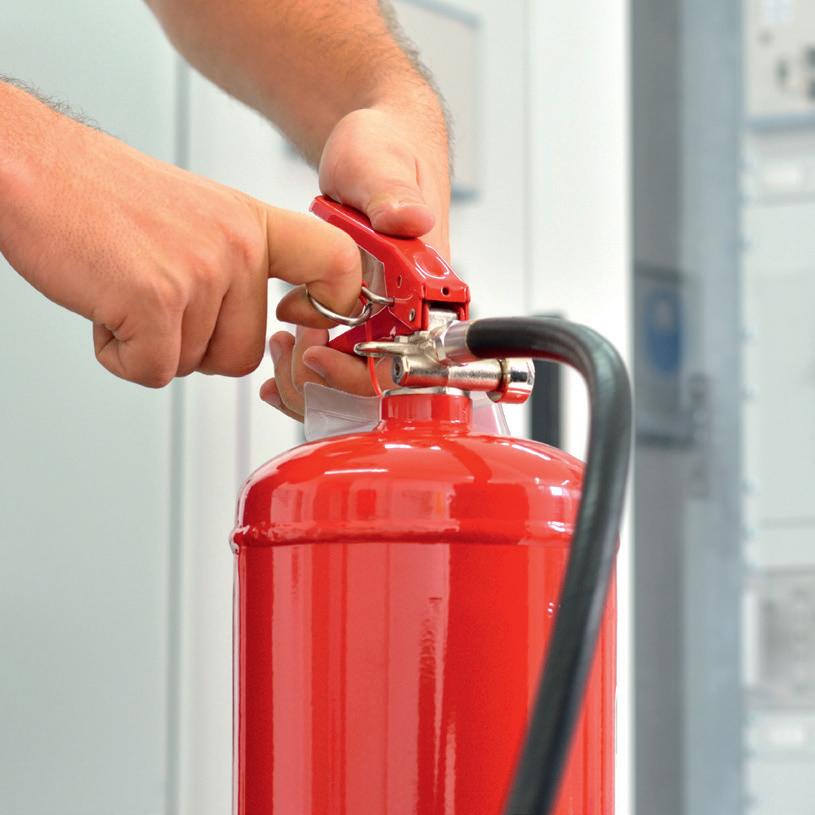
This course enables fire safety professionals to design an emergency lighting system. The course is based on BS 5266-1.
Who’s it for?
• Engineers with some basic knowledge of lamps and light fittings
• More experienced engineers
What other experience/training is needed to take the course?
• Basic knowledge of lamps and light fittings
What does the course cover?
• Basic regulations, relevant Standards, and when emergency lighting is needed
• Types of emergency lighting
• Exit sign pictograms, luminance and viewing distances
• Luminance requirements, lux levels, uniformity and duration requirements
• Emergency lighting for cinema and theatre auditoria
• Choosing maintained or non-maintained luminaries
• Design procedures covering all points of emphasis, such as stairs
• Using manufacturers’ spacing tables for escape routes and open areas
• Simple designs for high risk areas
• Conversion of mains luminaries for emergency use, achieving lux levels and using conversion spacing tables
• Disability glare and colour requirements
• Basic installation, wiring and fuse protection
• Testing and servicing to BS 5266-8
• Automatic testing
What are the benefits of taking this course?
• Engineers will gain the knowledge and understanding to be able to provide advice on emergency lighting, design a lighting scheme and be able to install, test and maintain as required
• Course manuals to take away and refer to
What are the ongoing benefits?
Being able to design, install, test and maintain emergency lighting systems.
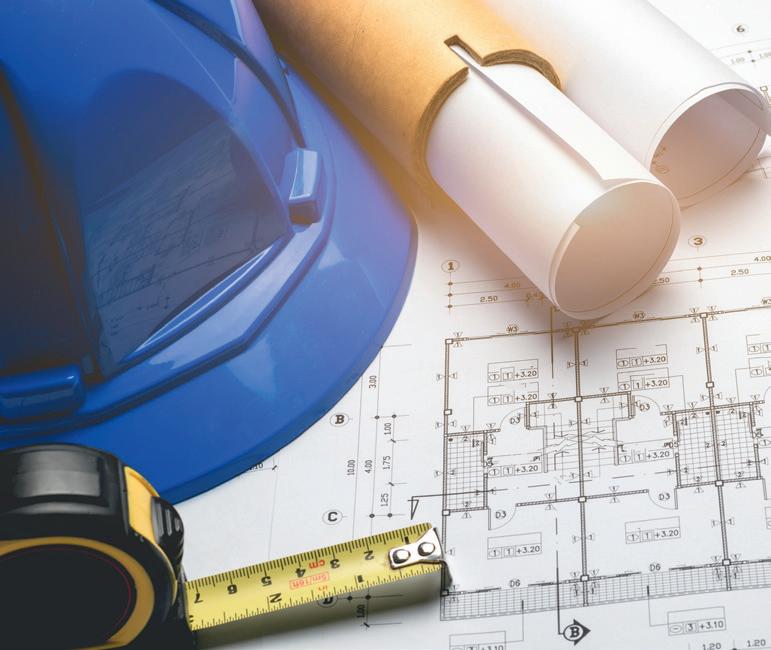
Based on BS 5266-1, this course further develops the knowledge and skills of the fire alarm engineer to include servicing and maintenance of the emergency lighting system.
• Any engineer with a basic knowledge of safety systems who wants to improve their knowledge of the requirements and techniques needed to be able to test, maintain and repair emergency lighting systems
• Engineers who are responsible for emergency lighting systems wanting to be able to assess and demonstrate the suitability and condition of the system for a specific site
What other experience/training is needed to take the course?
• Knowledge previously gained through the Emergency Lighting Part 1: Design course
What does the course cover?
• Legislative requirements for emergency lighting
• Relevant standards
• Installation considerations
• Reporting procedures for existing premises
• Testing considerations, function tests
• Testing considerations, duration tests
• Testing procedures and the use of automatic systems
• Fault rectification
• Protection of the premises during fault rectification
• Completion of the testing documentation

Engineers will gain the knowledge and understanding to be able to provide advice on emergency lighting system maintenance and servicing requirements, auditing and testing a system, completion of servicing, fault rectification and associated certification.
Engineers will be able to audit an existing system, provide advice on routine maintenance and to carry out periodic and remedial servicing.
Delegates will be able to demonstrate competence to carry out safe isolation, selection of the correct cabling and connection, testing and certification of an electric supply from the point of a pre-existing dedicated supply.
• Anyone working on or near a live electrical supply for an alarm system or any associated electrical equipment
• Note: this course does not qualify delegates to design and install a complete system to 18th Edition or Part P. Nor to install the dedicated supply from the distribution board
other experience/training is needed to take the course?
None.
• Introduction and basic understanding of Electricity at Work Regulations, BS 7671 (18th Edition), and BS 5839
• How electricity works, simple calculations, and an explanation of Ohms Law
• The route from generation to the consumer
• Safe isolation, switching off the supply and ensuring it is safe to work
• Testing: making sure that completed work is safe for the technician and the end user
• Certification: documenting your work
• Installation: making the connection
• Everything you have learnt put into practice
course?
• Delegates gain technical understanding of the regulations and principles relating to the electrical supply
• Course manuals to take away and refer to
• Delegates with an 80% or above pass rate will be issued with a certificate of competency issued by both the NICEIC and the FIA
TWO DAYS
• Installation engineers will gain the demonstrable competence required to run a supply from the dedicated supply to the required equipment; theoretical knowledge and practical application of skills combine to make this a fully comprehensive course
• Maintenance engineers will be able to safely isolate any electrical equipment before carrying out work
• Helps to reduce the risk of electrical injury and maintain compliance with the Electricity at Work Regulations
Delegates will be required to bring their own tools. Details will be provided with the course joining instructions.
Competence in electrical systems to ensure safe working practices when working on an alarm system connected to or near electrical supply.

This course provides a valuable introduction to the specialised field of voice alarms for non fire industry professionals and provides knowledge of their design and implementation.
Who’s it for?
• Designers
• Commissioning engineers
• Installation and maintenance engineers, Specifiers
• Sales persons
• Anyone involved in fire evacuation strategy in the security, electrical or fire industries
What other experience/training is needed to take the course?
None.
What does the course cover?
• Differences between a voice alarm system and a public address system
• British and EU Standards relating to voice alarms, particularly EN 54 and BS 5839-8
• Creating a voice alarm design plan
• Use of stand-alone voice alarm sounders
• Selection and use of loudspeakers
• Audibility requirements and clarity considerations
• Installation and fault finding
• Components: positioning and set up
• The interface between Voice Alarm Control and Indicating Equipment and Fire Alarm Control and Indicating Equipment
• Composition and use of life safety messages
• Using microphones and other ancillary equipment
• Amplifier power and battery calculations
• Defining zones for emergency and nonemergency loudspeakers
• To demonstrate their learning, delegates will be required to complete a simple design plan for a voice alarm system
ONE DAY
What are the benefits of taking this course?
On successful completion, the delegate will have a thorough understanding of voice alarm systems, how they work, and how to design, maintain and commission.
Learners will also receive course manuals to take away for reference.
What are the ongoing benefits?
Understand and advise on voice alarm systems.

This half-day training course provides fundamental knowledge of the recommendations of the latest revision of BS 5839-9 - Emergency Voice Communication Systems. At the end of the course, delegates will take an examination to test their knowledge. During the exam, delegates are allowed to access their notes and a copy of BS 5839-9:2021 if they have one available. Please note that access to a copy of BS 5839-9:2021 is not essential; the course and accompanying notes will provide all the necessary information for the exam.
What does the course cover?
• Design considerations
• Installation
• Commissioning & handover
• Maintenance
• User responsibilities
What other experience/training is needed to take the course?
None

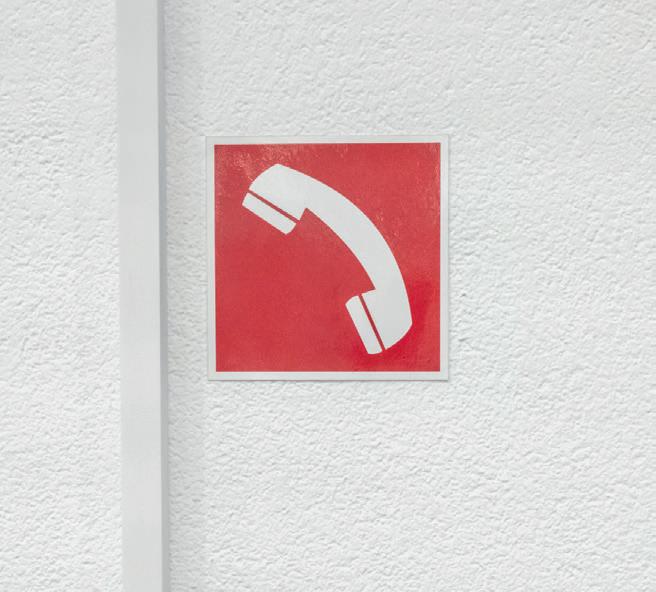
This training course provides the fundamental knowledge of the recommendations of BS 8629 for the design, installation, commissioning, and maintenance of evacuation alert systems for use by the fire and rescue service in buildings containing flats.
This course is for any person, organization or business with an involvement in any building containing flats. Whilst the typical application of these systems would be high rise blocks of flats, the scope of BS 8629 includes any building containing flats, regardless of height. This course would be suitable for risk assessors, designers, installers, commissioners and maintenance technicians etc.
No prior experience or qualifications are required to take this unit, although completion of either the Fundamentals course or the Foundation course would be beneficial, as would any existing experience with fire detection and fire alarm systems.
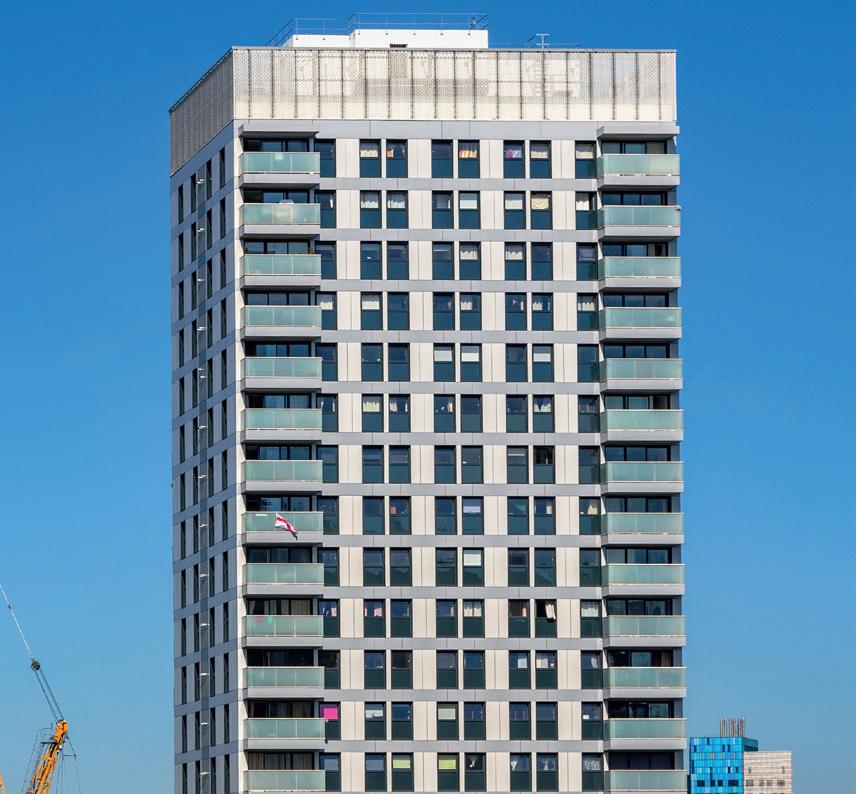
ONE DAY
• The need for an emergency evacuation system
• The requirements with regards to monitoring, integrity and reliability
• The recommendations for evacuation alert zones, sounders and audibility
• Consideration of arrangements for disabled people
• Recommendations in relation to the Evacuation Alert Control & Indicating Equipment
• The recommendations for cabling, wiring and other interconnections
• Considerations for radio linked systems
• Commissioning, Handover, Maintenance and the User responsibilities
Taking this course will provide an understanding of the recommendations for the design, installation, commissioning, and maintenance of evacuation alert systems for use by fire and rescue services in buildings containing flats.
Successful completion of the course will provide the ability to prove knowledge and understanding of the BS 8629 Standard and of evacuation & alert systems, which would be beneficial in relation to the SP207 BAFE scheme. Companies with staff that have successfully completed this course will be well positioned to provide design, installation, commissioning and maintenance services in relation to these systems as they become more prevalent.
This half-day (9AM - 1PM including the course test) training course provides fundamental knowledge of the recommendations of BS 6266 – Fire protection for electronic equipment installations.
• Any person, organization or business with an involvement in the fire protection for electronic equipment installations categorized as medium, high and critical risk
• Risk assessors
• Designers
• Installers
• Commissioners
• Maintenance technicians
No prior experience or qualifications are required to take this unit, although completion of the BS 5839-1 Fundamentals course would be beneficial, as would any existing experience with fire detection and fire alarm systems.
• Risk assessment categories
• Fire detection and fire protection strategy
• Separation and construction
• Building engineering services
• Fire detection and alarm systems
• Fixed systems and other fire-fighting equipment
• Smoke control
• Fire safety management
• Protection of information, contingency and recovery measures
• Business-critical ancillary services
• Inspection, testing and commissioning
This training course provides fundamental knowledge of the recommendations of BS 6266 - Fire protection for electronic equipment installations.
At the end of the course, delegates will take an examination to test their knowledge. During the exam, delegates are allowed to access their notes and a copy of BS 6266 if they have one available. Please note that access to a copy of BS 6266 is not essential; the course and accompanying notes will provide all the necessary information for the exam.
Successful completion of the course will provide the ability to prove knowledge and understanding of the BS 6266 requirements fire protection in electronic equipment installations. Companies with staff that have successfully completed this course will have a base level knowledge to provide design, installation, commissioning and maintenance services in relation to these systems.

This course fulfils the requirements for technician training under the company certification scheme, working with F-Gases, detailing the UK Regulations for safe handling of Fluorinated Gases and their recovery, equipment and testing.
Anyone who is involved in the handling of F-Gases through installation, commissioning and maintenance of fire systems.
What other experience/training is needed to take the course?
None.
What does the course cover?
• Environmental issues
• Technical Standards
• Regulation 517/2014, 2015 No. 310/ 2018 SI 98 & UK regulations
• Fire protection equipment containing F-Gases
• Valves, actuators, prevention of discharge and leakage
• Equipment and tools for safe handling and work practices
• Ability to install fire protection containers
• Practices to move pressurised containers
• Checking of system records
• Visual and manual leak checking
• Recovery of F-Gases
are the benefits of taking this course?
• The F-Gas – Fire Protection Systems
Qualification will provide delegates with the necessary understanding of the legislation and its application for the safe handling of F-Gases
• Delegates will hold the relevant certification for compliance with current legislation
• This course provides the theory training requirement for registration of the company certification scheme
• Practical element included where possible
One day – half day theory and half day practical if available. Normally finishes at 2pm.
Understanding of F-Gases and their use in fire systems. Compliance with legal requirements.

• A comprehensive understanding of the use and safe handling of F-Gases in accordance with current UK legislation
This course is a legal requirement if learners wish to work on halon systems. Delegates will learn safe working practices as well as equipment testing.
The FIA is the approved body for working with halon systems as certified by DEFRA.
Who’s it for?
Technical staff involved in servicing or maintaining the critical uses of halon gases in applications such as aircraft extinguishing systems and aircraft portable extinguishers. This is a legal requirement under UK Regulations.
What other experience/training is needed to take the course?
None.
What does the course cover?
• Safe handling of halon gases
• Equipment
• Testing
• Recovery of gases
• Legal and technical information
What are the benefits of taking this course?
• Ensures that participants have a comprehensive understanding of the use and safe handling of halon 1211 and 1301
• Course manuals to take away and refer to
• Legal requirement to work on halon systems
What are the ongoing benefits?
Successful completion provides certification that the delegate has been trained to comply with the Ozone Depleting Substances (Minimum Qualifications) Regulations.
HALF DAY

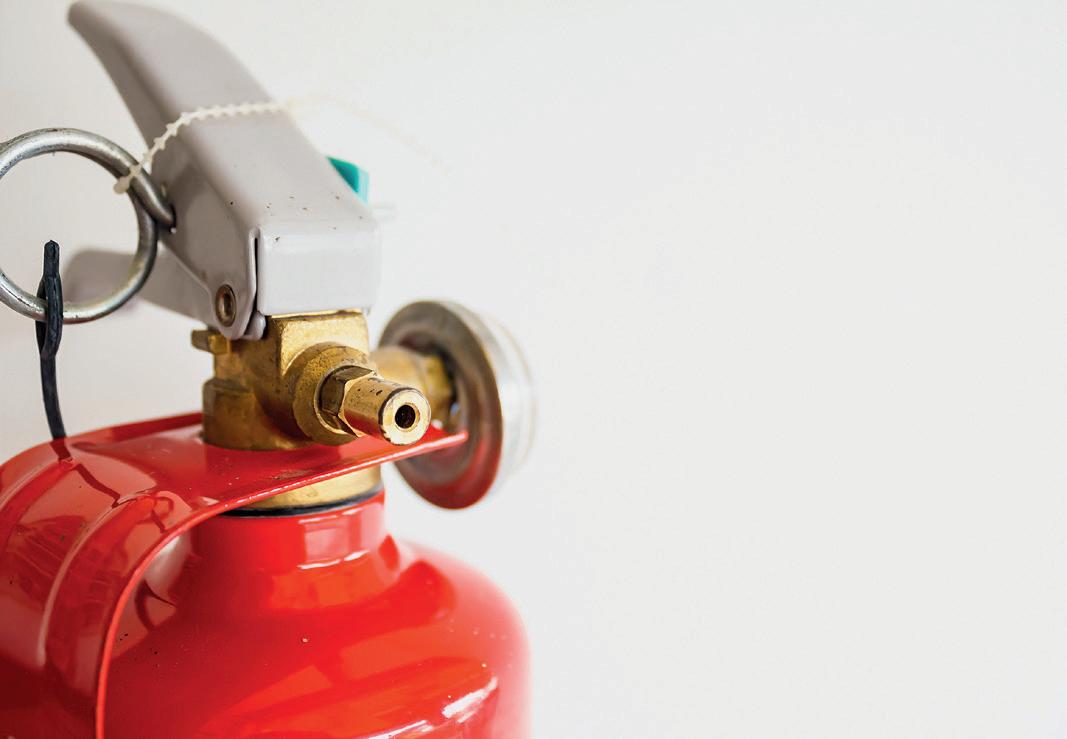
This course has been developed to generate awareness of the risks and to develop action plans and safety measures regarding lithium batteries in commercial premises.
Who’s it for?
This course is aimed at first responders to EV Fires listed below:
• Operational F&RS Crews
• Police Staff
• Ambulance Staff
What does the course cover?
This course covers the subject of Lithium Batteries and the different types in use and how they work.
Learn about thermal runaway, it’s causes, and impact, vapour clouds and vapour cloud explosions (VCE). Battery chemistry and toxicity issues related to that chemistry.
The course outlines possible strategies and tactics that first responders can adopt when attending EV incidents.
Covers the types of Battery Energy Storage Systems (BESS) & Domestic Battery Storage System (DBESS).
• Behaviours – Understanding the risks
• Knowledge – knowledge and understanding or the causes of battery fires and the impact it can have
• Skills – What actions to take when seeing the signs of thermal runaway and take appropriate safety procedures
• Establishment of work habits – Assessing the risk
ONE DAY
Who’s it for?
This course is aimed at Non-first responders to EV Fires listed below:
• Employees
• Fire Consultants
• Safety Manager
What does the course cover?
This course covers the subject of Lithium Batteries and the different types in use and how they work.
Learn about thermal runaway, it’s causes, and impact, vapour clouds and vapour cloud explosions (VCE). Battery chemistry and toxicity issues related to that chemistry.
Covers the types of Battery Energy Storage Systems (BESS) & Domestic Battery Storage System (DBESS).
• Behaviours – Understanding the risks
• Knowledge – knowledge and understanding or the causes of battery fires and the impact it can have
• Skills – What Actions to take when seeing the signs of thermal runaway and take appropriate safety procedures
• Establishment of work habits – Assessing the risk
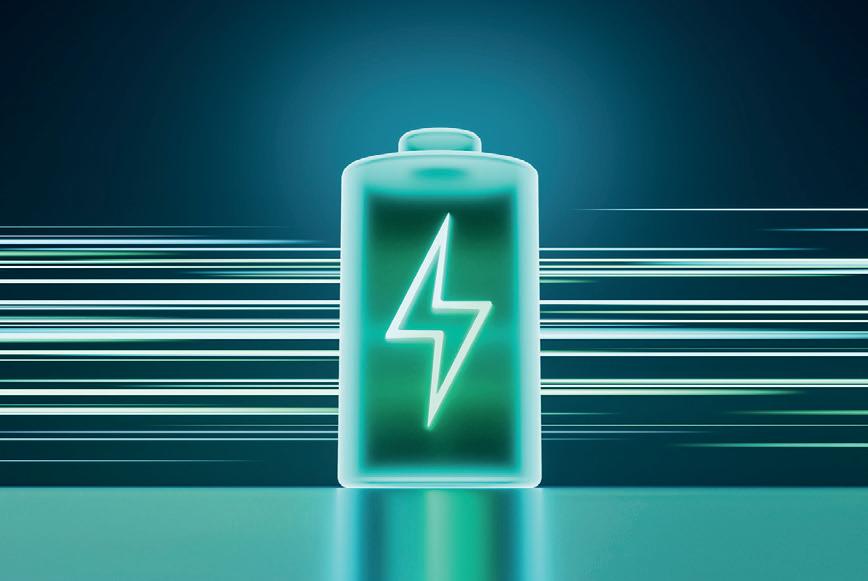
This training course provides fundamental knowledge of the recommendations of the BS 7273 codes of practice for the operation of fire protection measures: part 4 “Actuation of release mechanisms for doors”; and part 6 “Interface with ancillary systems and equipment”.
At the end of the course, delegates will take an examination to test their knowledge. During the exam, delegates are allowed to access their notes and a copy of BS BS 7273-4:2015+A1:2021 and BS 7273-6:2019 if they have them available. Please note that access to a copy of these standards is not essential; the course and accompanying notes will provide all the necessary information for the exam.
What does the course cover?
BS 7273-4:
• Door categories
• Fail-safe conditions
• Manual controls
• Detector spacings
• Commissioning
• Maintenance
BS 7273-6
• Status monitoring
• Interfacing recommendations to the ancillary systems and equipment
• Inspection and servicing
• Commissioning
THREE HOURS
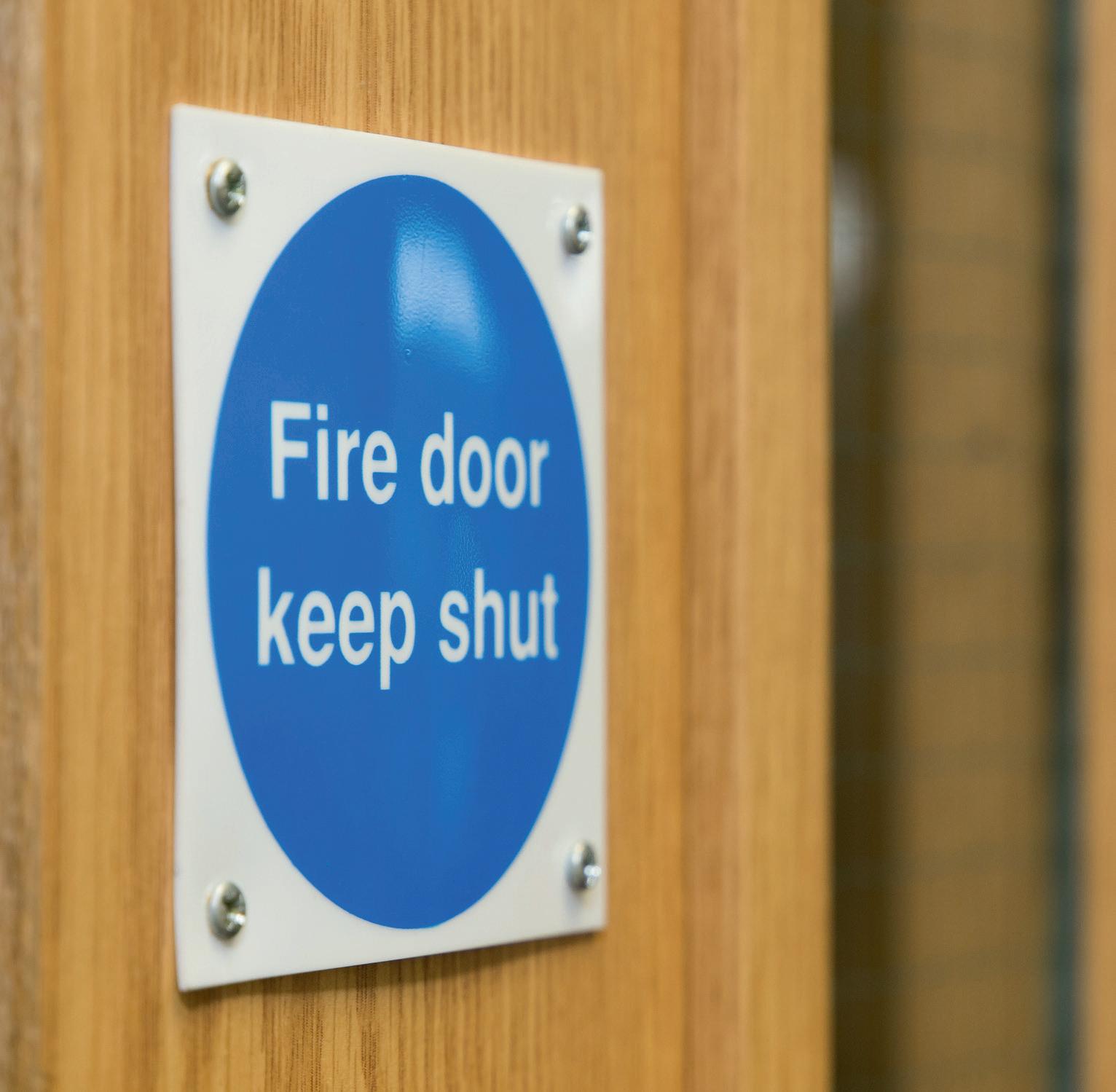
This one day course will provide delegates with the foundation knowledge to enable them to communicate to customers the need for fire safety signs and to select, locate and install the correct fire safety signs and notices.
Who’s it for?
All service technicians.
What other experience/training is needed to take the course?
None.
What does the course cover?
• Other safety signs associated with fire safety
• Legislation relevant to the provision of fire safety sign and notices in premises
• Current standards and code of practice related to fire safety signs
• Door control mechanism
• Methods of making signs visible
What are the benefits of taking this course?
• Knowledge of the purpose and function of fire risk assessment and evacuation strategy
• General understanding of other safety signs associated with fire safety
• Knowledge of the relevant legislation covering the provision of fire signs and notices in premises
• Knowledge of the current standards and codes of practice governing the positioning of fire safety signs and notices
• General awareness of door control mechanism
• Knowledge of the different methods of making signs visible in respect of light and light levels
• Knowledge of the signs and notices that would be required for fire safety facilities, equipment and systems such as raising mains, AOVs, extinguishers and fire alarms
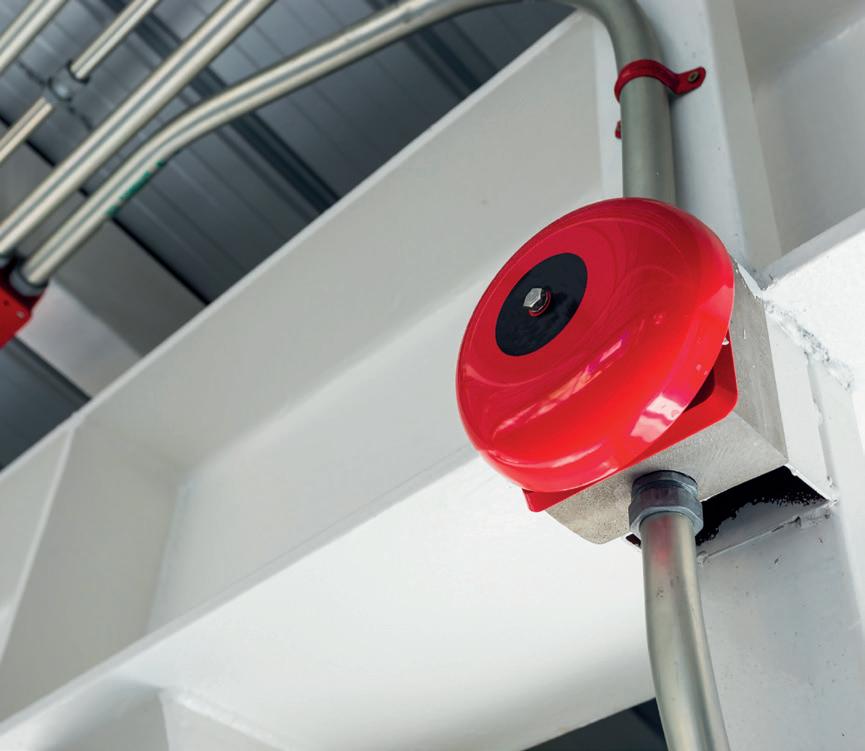
This course provides an introduction to fire risk assessment. It provides an understanding of the legal and practical reasons for fire risk assessment as well as the tools to interpret the findings of an assessment.
• Owners, managers or employers in non-domestic premises
• Fire alarm engineers
• Portable extinguisher technicians
• Anyone asked to offer guidance and advice on the responsibilities and steps to produce a fire risk assessment, or who is advising the Responsible Person/Duty Holder of their legal responsibilities
What other experience/training is needed to take the course?
None.
• The relevant parts of the Fire Safety Order 2005 and the Fire Scotland Act 2005
• The five steps in a fire risk assessment
• Due diligence for the owner of the premises
• Documentation required for a fi inspection
• Categories of protection as detailed in BS 5839
• Selection of the category required by your fire risk assessment
• Example template for a fire risk assessment
ONE DAY

An understanding of how a fire risk assessment is undertaken and the knowledge to advise others.
N.B. This course will not qualify delegates as a fire risk assessor.
The 5 day intensive programme covers all aspects of the management process. Each day is themed starting with prevention, going onto detection and alarm, means of escape, fire containment and finishing with firefighting and BCP. Building fire case studies, along with the most common ignition hazards are reviewed and analysed.
Delegates receive a comprehensive set of notes and documents that represent a significant learning resource for future use. The qualification available with the course requires completion of a short test and delegate assignments to complete after the training. Upon successful completion, delegates are issued with a skills for justice certificate. Providing outline knowledge of fixed fire fighting systems, this two-day course covers the principles of fire and extinguishing. Delegates will learn how extinguishing systems work and where they are best suited.

Providing outline knowledge of fixed fire fighting systems, this two day course covers the principles of fire and extinguishing. Delegates will learn how extinguishing systems work and where they are best suited.
Who’s it for?
• Fixed extinguishing system installers
• Facilities managers and maintainers
• Consultants
• Designers
• Insurers
• Responsible Person/Duty Holder
What other experience/training is needed to take the course?
None.
What does the course cover?
• Extinguishing systems including chemical, inert gas, carbon dioxide and watermist (high and low pressure)
• Detection systems and interface to fire alarm and building management systems
• Pressure relief and extraction systems
• Types of design (local application, total flood)
• Design guidance
• Maintenance guidance
• Coverage of over 26 current and draft British and International Standards, Codes of Practice and associated literature
• Part 1 The principles of fire – what it is, how it starts and spreads and the types of fire
• Part 2 Prevention, control, suppression and extinguishing of fires and how to select the relevant system(s)
• Part 3 How extinguishing systems work
• Part 4 Selection of extinguishing systems
• Part 5 System delivery types & components
What are the benefits of taking this course?
• A thorough knowledge of a range of fire suppression systems including their use and operation, interface with the building and electrical systems
• Guidance on their design and maintenance
• An understanding of the current and draft Standards and associated documentation
• Course manuals to take away and refer to
What are the ongoing benefits?
Knowledge and understanding of in-situ fire fighting systems, as well as how they work and what is most appropriate for the situation.
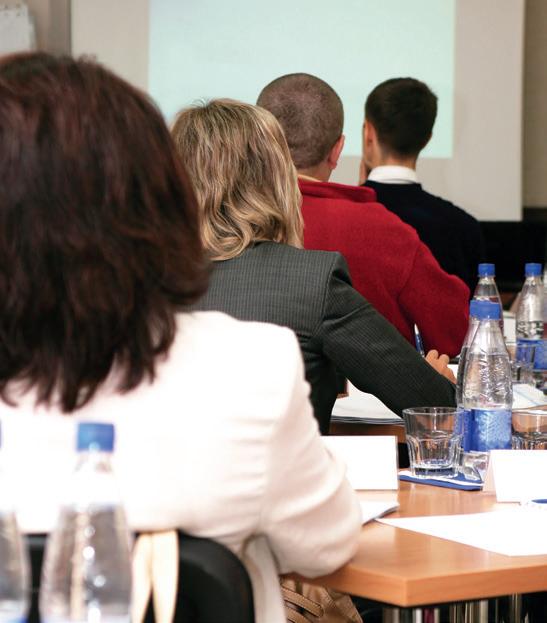
• Part 6 System design
• Part 7 Safety, toxicological factors & Environment
• Part 8 Fire detection and triggering
• Part 9 Interface with building and building management
• Part 10 Commissioning, maintenance & additional factors
NOTE: This course does not cover the topic of explosion protection
Management Training, for the Fire & Security Industry, by the Fire & Security Industry
This ground-breaking, highly participative management development programme, starting with its first course in October 2023, has been built for and with business owners, leaders and managers in the Fire Safety and Security Sector.
The aim of this programme is to equip managers and leaders, within the fire safety and security industry, to lead their staff, teams and organisations confidently to deliver higher performance.
Rathbone Results are a leading business consultancy in the fire and security sector and also work with B2B companies who are committed to scaling up their business.
They have worked closely with the FIA to develop this management development programme and make it relevant to the Fire Industry.
If you are unable to make the starting date for the course listed please email training@fia.uk.com to be kept up to date on new course intakes.
What does the course cover?
• Change Management and Change Resistance
• Time Management and Priorities
• Delegation and Performance Management
• Clear Communication and Effective Meetings
• Building High Performance Teams and Great Places to Work
• Developing a Whole-Business Perspective
• Understanding Business Finance
FIVE DAYS
Course Highlights
• 4.5 day programme all delivered online via Zoom
• 28 CPD hours awarded by the FIA
• Each programme is limited to 12 participants
• Participation and completion certificate
What are the ongoing benefits?
Certificate is issued on completion of the 7x modules, 3x self-assessments and submission of application log within 1 week of programme’s completion.

Since first going online to adapt to the pandemic in 2020, the FIA has offered hundreds of online courses offering greater availability and flexibility than ever before.
Remote learning and examinations have allowed students from around the world to begin, continue and complete their professional development from their chosen location.
The online training is delivered by our professional instructors using the Zoom webinar platform. The course material will be presented, explained and expanded upon by the trainer throughout the course, with students having the ability to ask questions using the Q&A function, as well as directly to the trainer throughout the course. Trainers can also make use of the annotation facility within zoom, to help guide students through the slides as they are discussed.
Students will also have access to the course manual online via the Mimeo Digital platform. Once the course has been completed, students will also receive the option to request that a hard copy of the manual be issued to their chosen address.
For more information relating to FIA online training, please refer to the article, ‘An introduction to FIA remote learning’ on our website.
For more information relating to the actual online examination process, please refer to the article, ‘FIA On-line exams – What’s involved’, also available on our website.


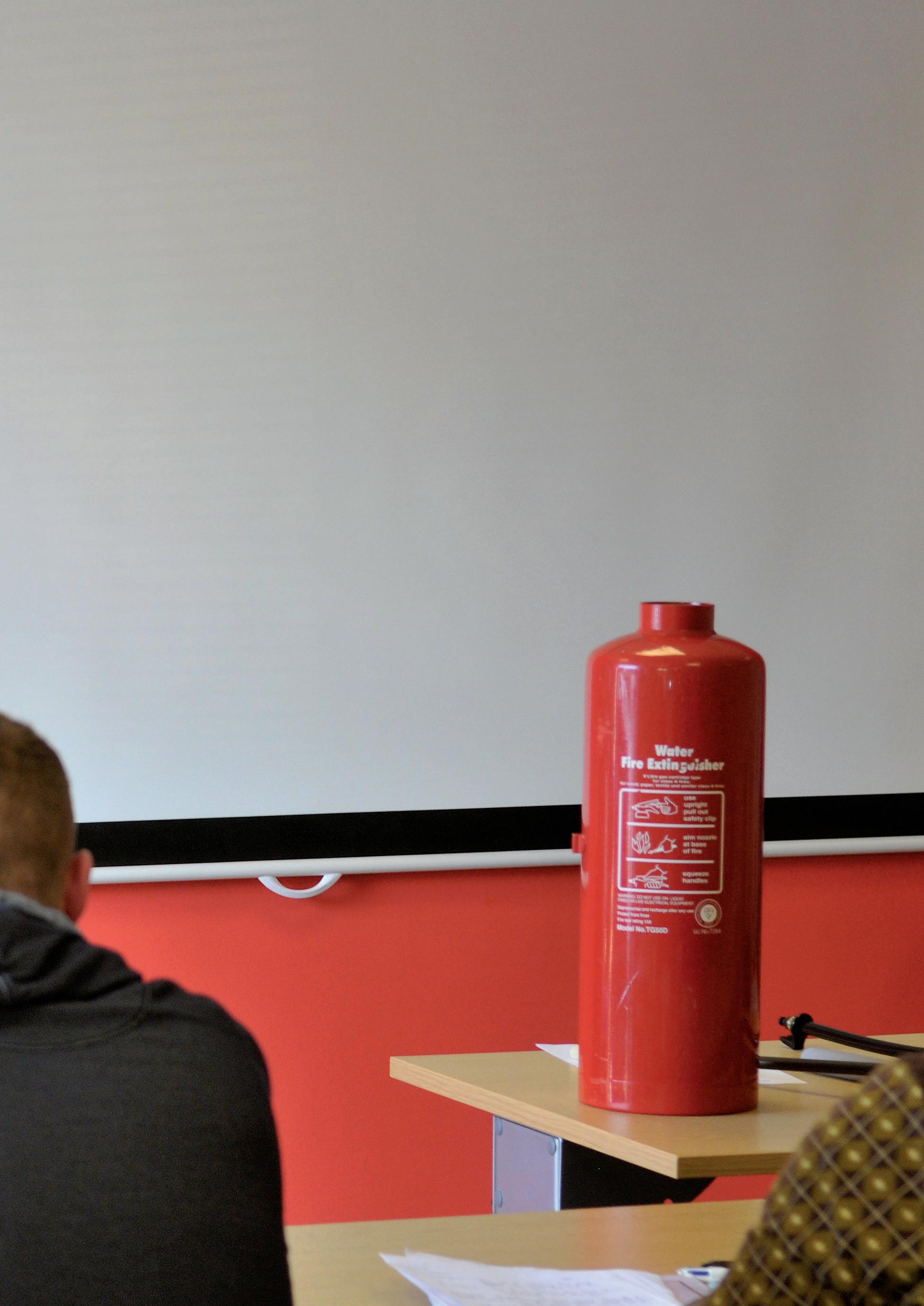
We can deliver a dedicated course just for your staff anywhere that’s convenient for you, or at our training centre in Hampton, Middlesex.
This is particularly cost effective if you have ten or more engineers requiring training. The Servicing and Maintenance of Portable Fire Extinguishers course requires a minimum of eight people.
To enrol, or if you have any questions: Email the Training department Training@fia.uk.com or call us on 020 3166 5002
Provide us with at least three possible dates, which course you would like, and where you would like it to be held.


twitter.com/fireindustry
linkedin.com/company/fire-industry-association plus.google.com/+FireIndustryAssociation youtube.com/user/TheFireIndustry